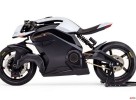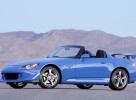PONTIAC, Mich. – Engineers at General Motors’ Pontiac Engineering Center are powering parts of the facility with excess energy produced from testing engines.
Since Pontiac began the energy efficiency project following a 2008 renovation, the facility has regenerated more than 26.7 million kilowatt hours of energy to power internal processes. This is the equivalent of the electricity consumed by 2,326 U.S. households in one year.
The savings is no accident. GM engineers built in this capability as they renovated and expanded the facility four years ago.
“Pontiac was a brownfield project, which meant parts of it were in existence already, but other wings of the facility had to be built from the ground up,” said Dave Gunnels, engineering manager for Pontiac test facilities. “The benefit of building from scratch was that we were able to bake in energy efficiency aspects directly into the system, rather than trying to retrofit.”
The energy generated from engine testing powers air conditioning and lighting in the laboratory area. Besides lowering the overall energy output, it allowed GM designers to downsize the transformers and network architecture -- similar to a motherboard in a computer -- because not as much original energy would be needed.
“Everything that we came up with when designing the upgraded systems was based on the availability of regenerative power, like what we pull from the engines,” said Gunnels. “If we didn’t have the re-gen feature, our utility costs would’ve been higher.”
The facility also cleans the remaining engine exhaust before it is released into the atmosphere. A common ductwork system collects engine exhaust and helps it travel through thermal oxidizers outside the plant before being released into the air. The “destruction efficiency” is 96 percent, meaning all but 4 percent of hydrocarbons and other constituents are removed before release.
Pontiac has four thermal oxidizers at its disposal, used only on an as-needed basis.
“If we’re running fewer test engines within the facility, we might only have one or two units operating,” Gunnels said. “We don’t want to consume more energy than we need to.”
For more information on GM’s environmental commitment, visit its sustainability report and environmental blog.
General Motors Co. (NYSE:GM, TSX: GMM) and its partners produce vehicles in 30 countries, and the company has leadership positions in the world's largest and fastest-growing automotive markets. GM’s brands include Chevrolet and Cadillac, as well as Baojun, Buick, GMC, Holden, Isuzu, Jiefang, Opel, Vauxhall and Wuling. More information on the company and its subsidiaries, including OnStar, a global leader in vehicle safety, security and information services, can be found at https://www.gm.com
See Now: OnePlus 6: How Different Will It Be From OnePlus 5?






















